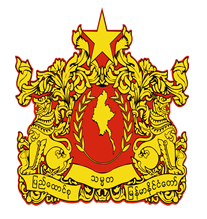Burma: Government
Key Figures
- Chief of State:
- Prime Minister, State Administration Council Chair Min Aung Hlaing
- Head of Government:
- Prime Minister, State Administration Council Chair Min Aung Hlaing
Overview
- Government Name:
- Republic of the Union of Myanmar
- Constitution:
- Adopted: 2008; Was voted on by a public referendum in attempt to slowly transition Burma into a democracy, although opposing authorities consider it to be more of a tool for maintaining military control of Burma. The structure of government, its powers, and elections are detailed in depth. However, revisions in state structure were not implemented until August 2010.
- Government Type:
- Parliamentary Republic

Index of Economic Freedom
Country Risk Rating
Government Branches
| Main Powers | Election Process | Election Cycle 1 | |
|---|---|---|---|
| Executive | The president appoints the cabinet, nominates judges, is the commander-in-chief of armed forces, and is in charge of executory tasks of the government. |
The president is elected by the parliament from among three vice presidents of the different parliamentary houses. |
5 years |
| Judicial | The supreme court is the highest court of the land. |
The chief justice and judges are nominated by the president with approval of the Pythu Hlattaw. |
Mandatory retirement age of 70 |
| Legislative | The legislative branch is in charge of creating legislature and confirms the president's nominations. |
Members of the house of nationalities (Amyotha Hluttaw) are elected on basis of township and population. Members of the house of representatives (Pythu Hluttaw) are directly elected equally from regions and states. |
5 years |
Regional Trade Blocs
No Regional Trade BlocsInternational Organization Participation [2]
Environmental Agreements [3]
Tax Information [2]
- Tax Authority:
- Information not available
- Tax Name:
- Information not available
Sources:
- ElectionGuide http://www.electionguide.org/
- EY, http://www.ey.com
- CIA World Factbook, https://www.cia.gov/the-world-factbook/
- U.S. Bilateral Relations Fact Sheets http://www.state.gov/r/pa/ei/bgn/


